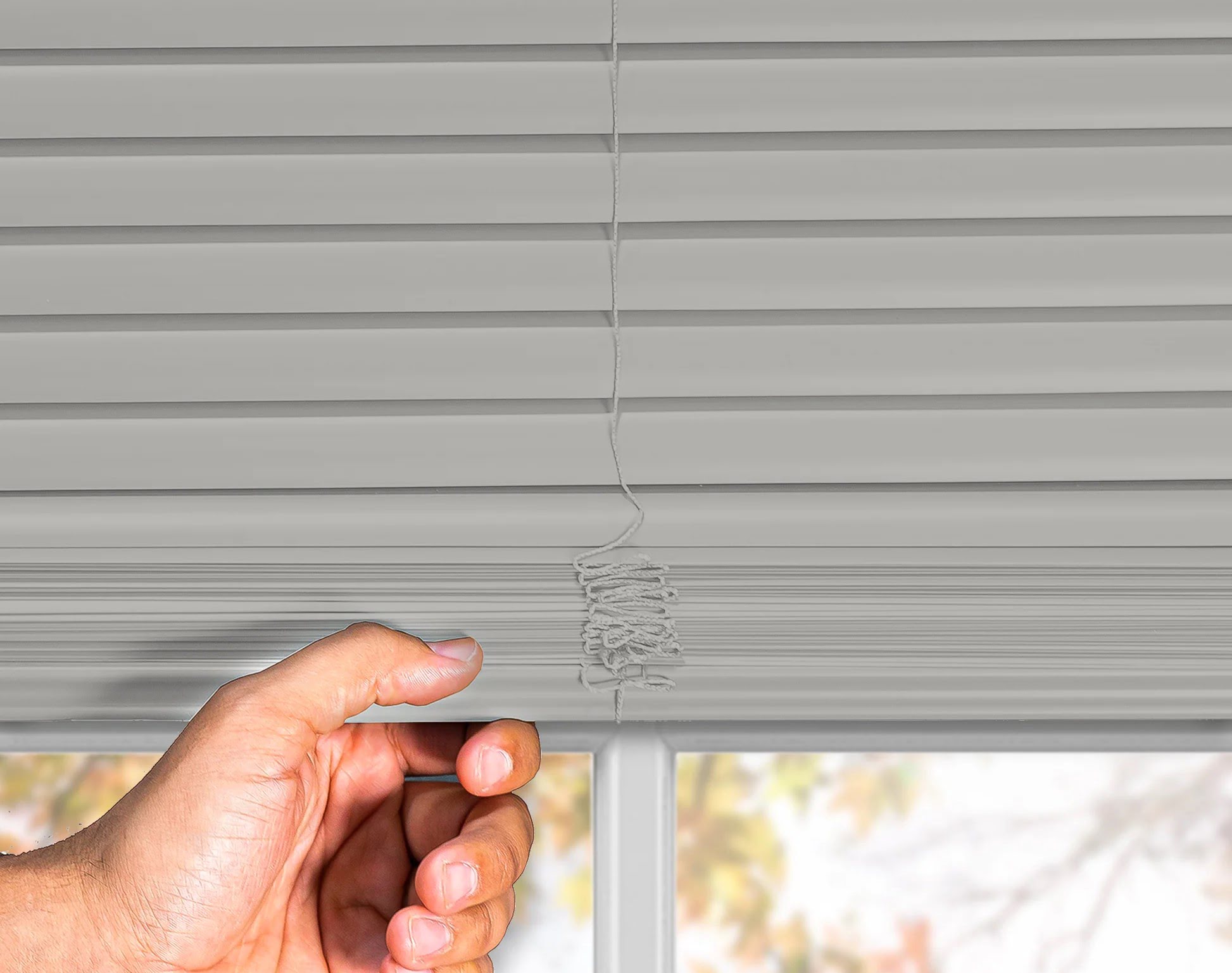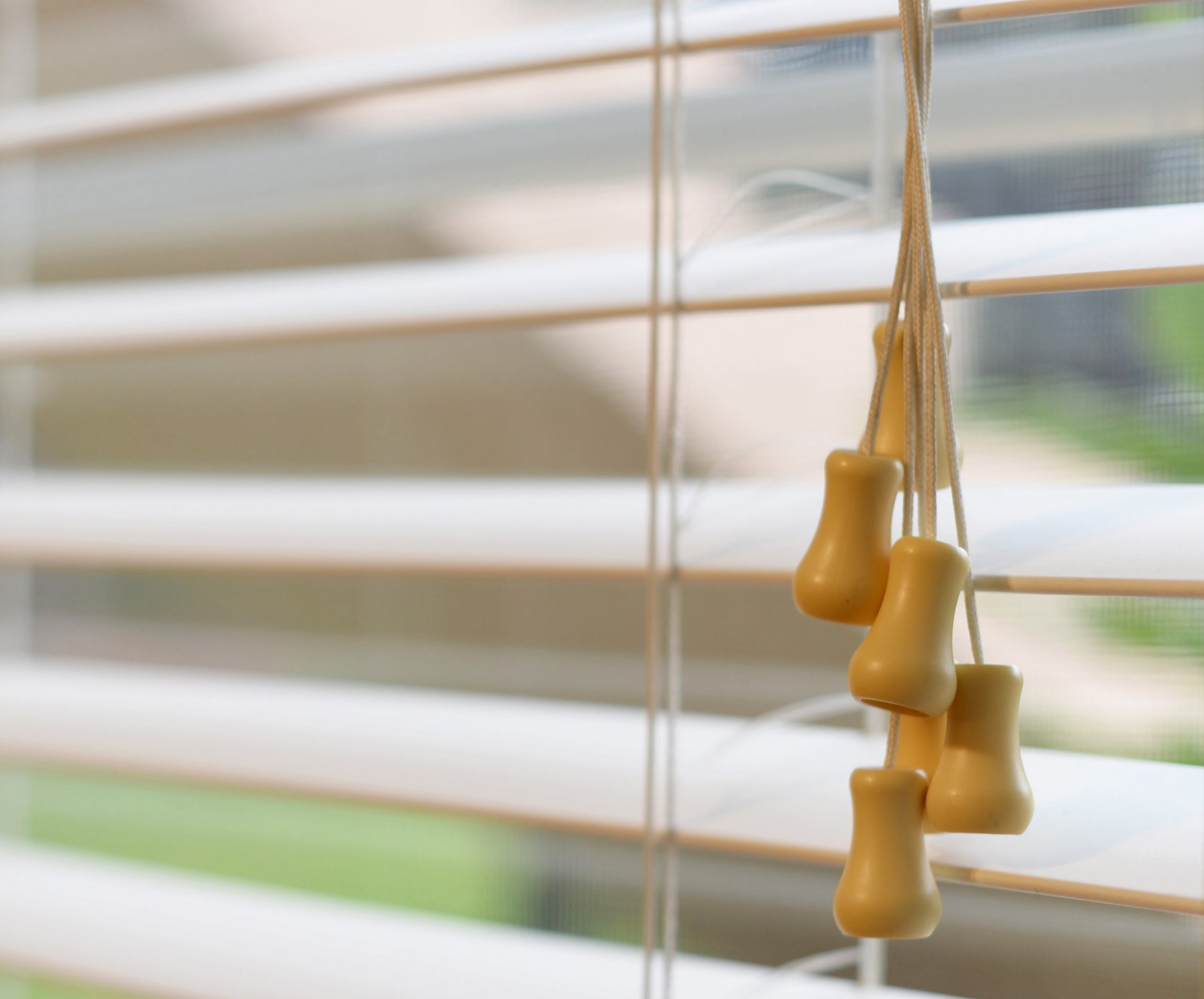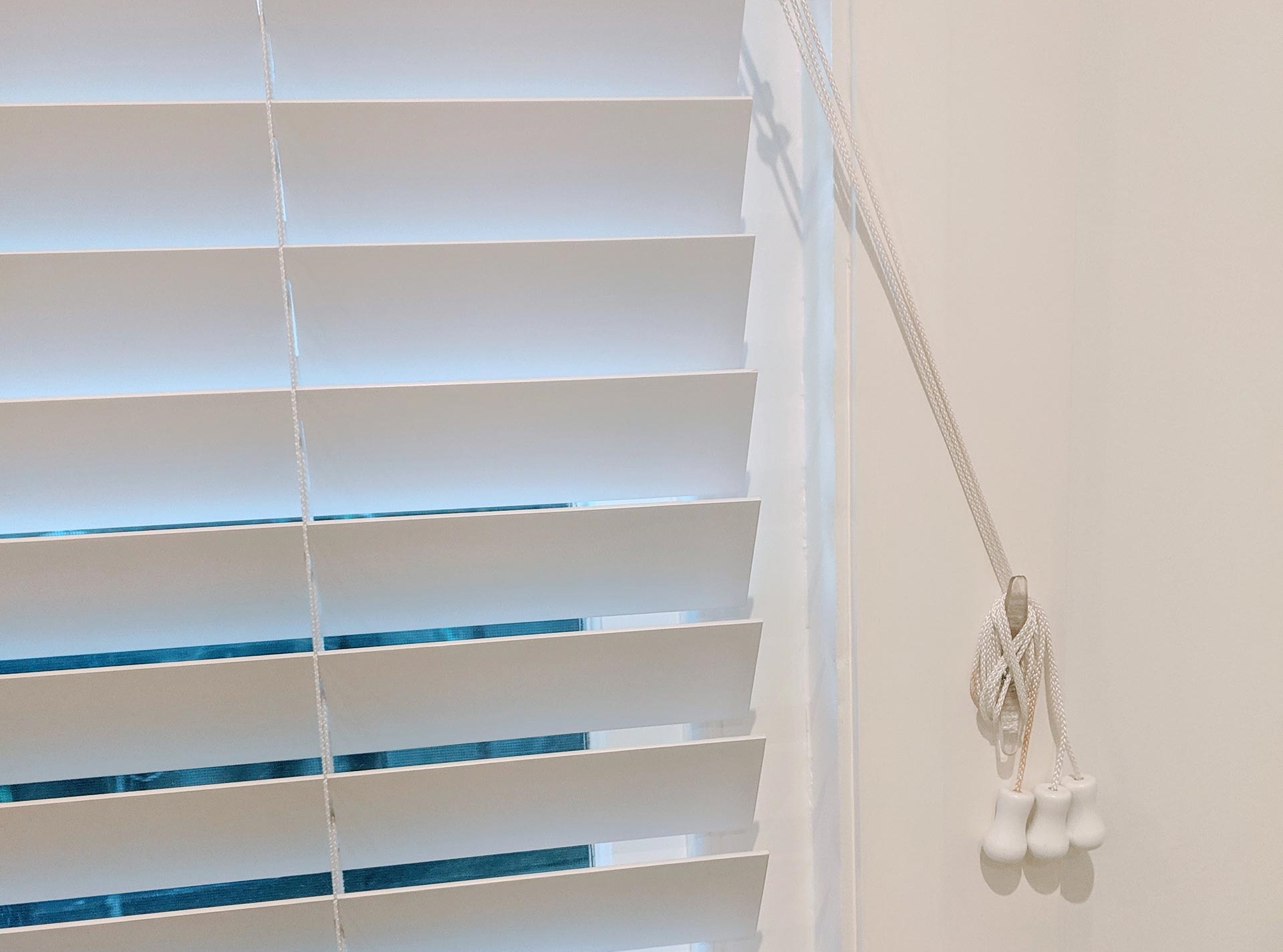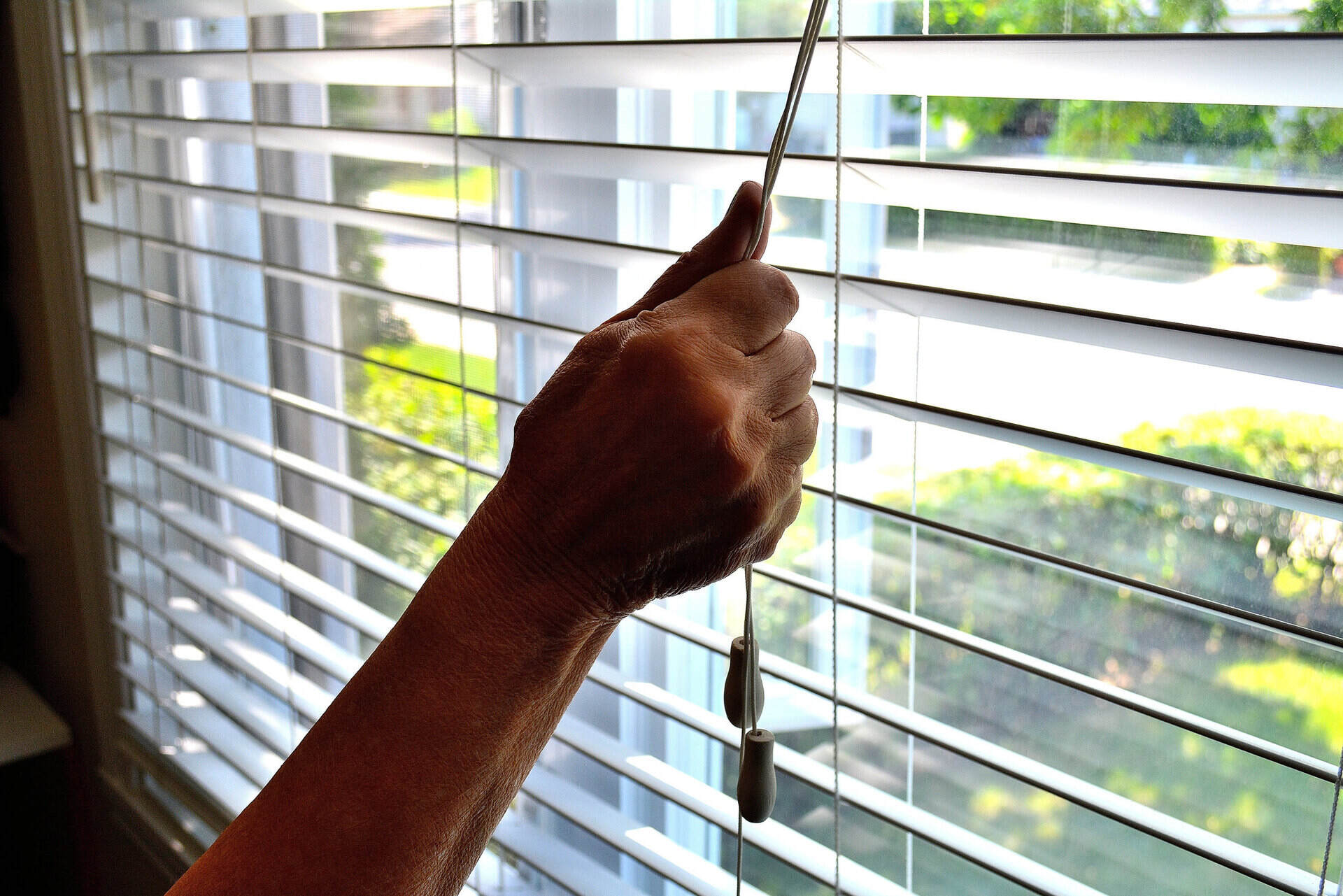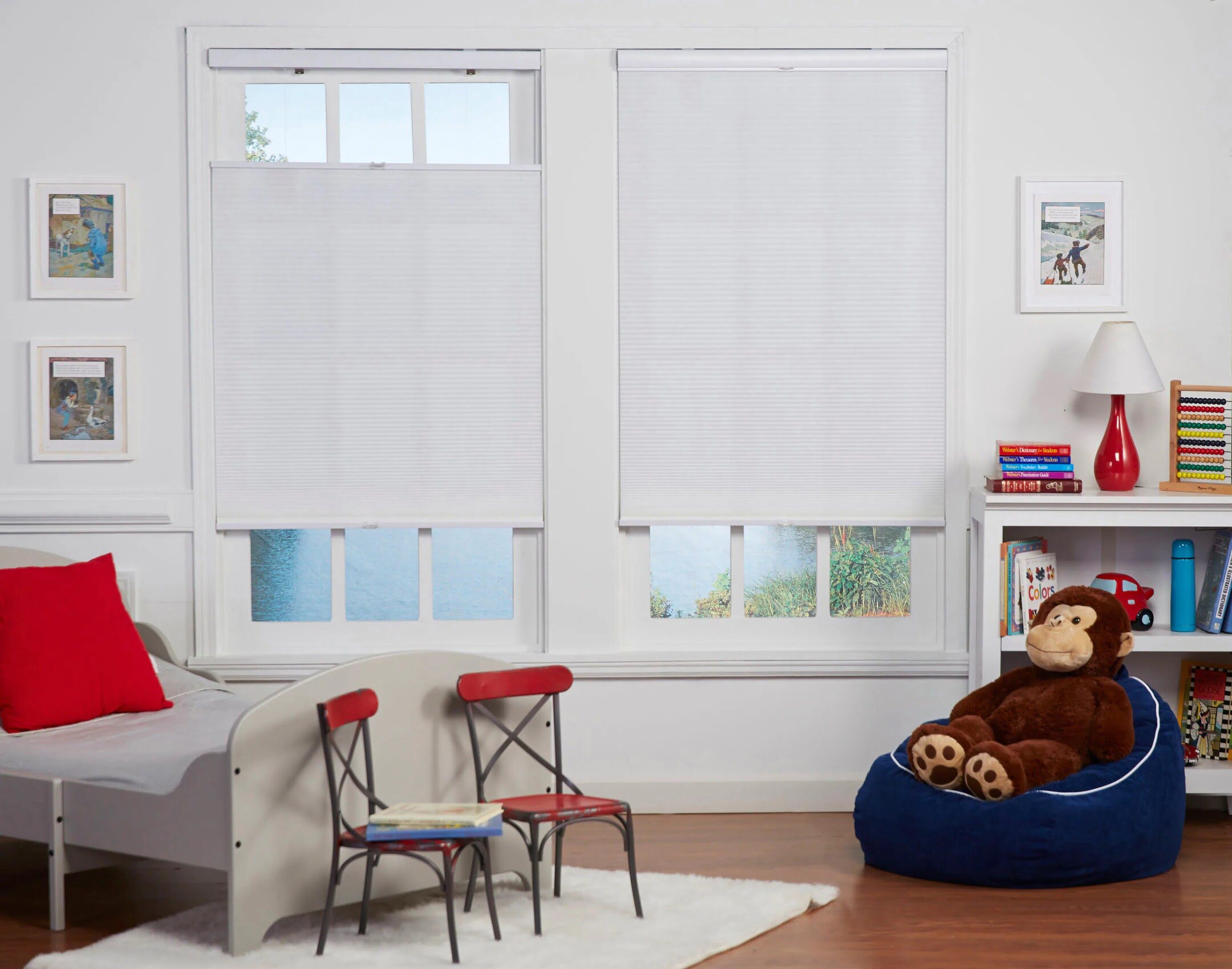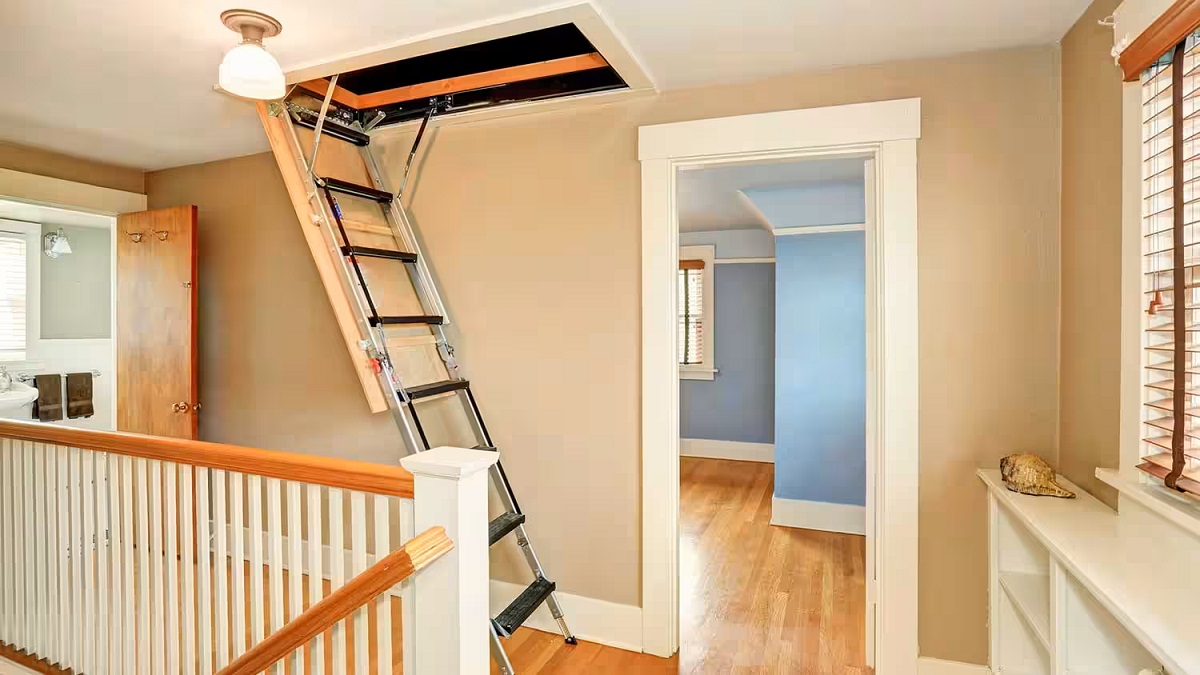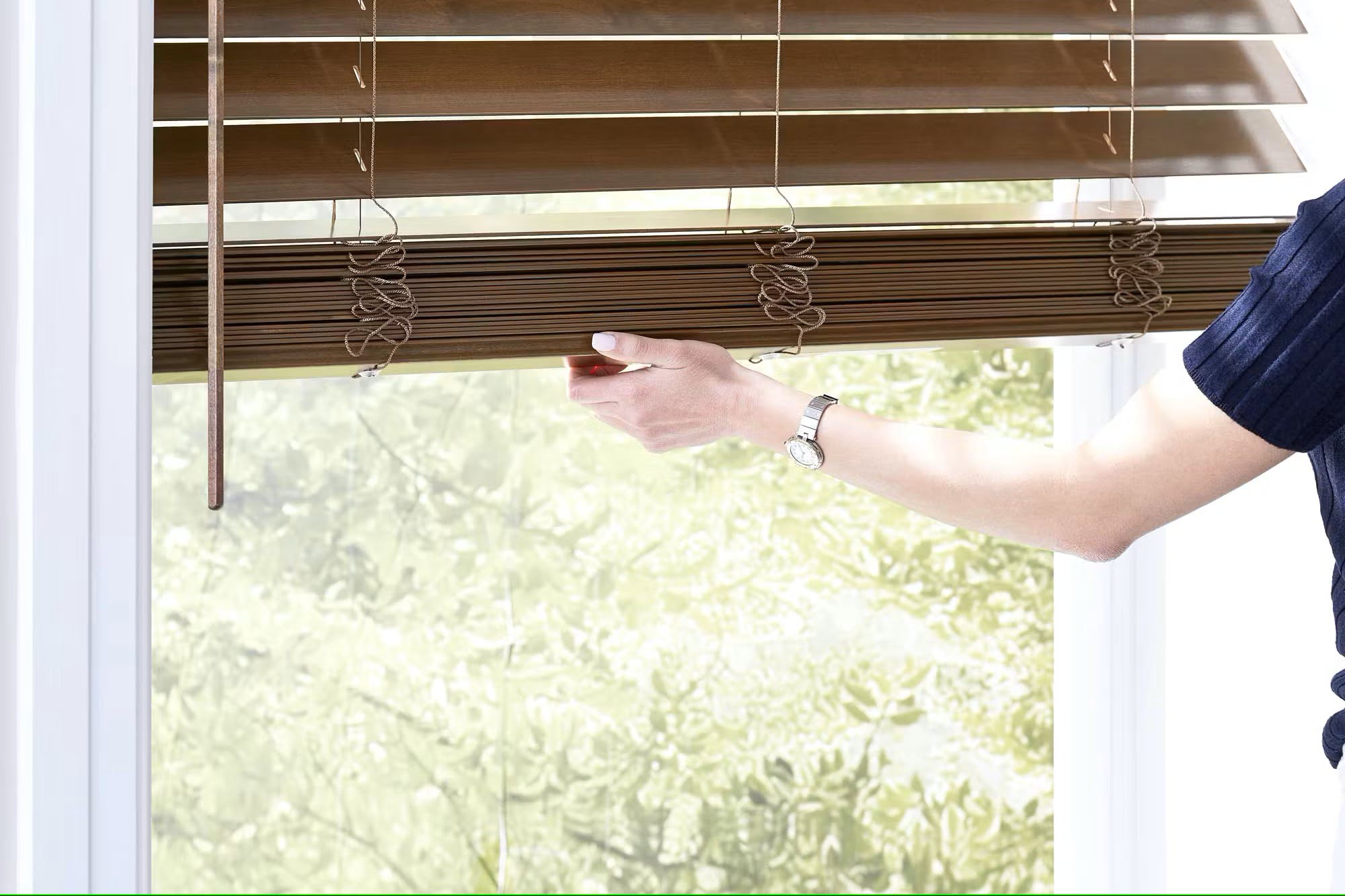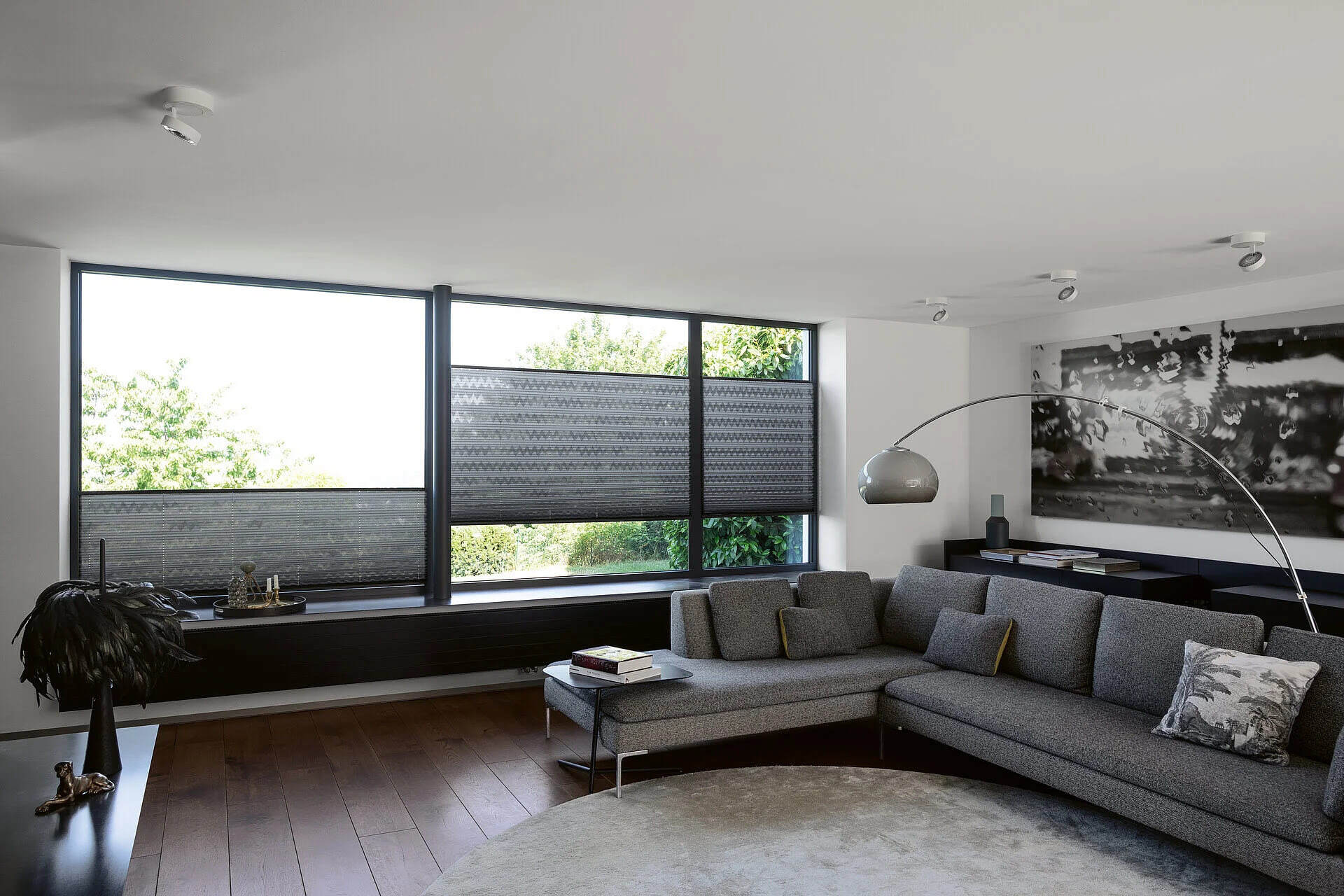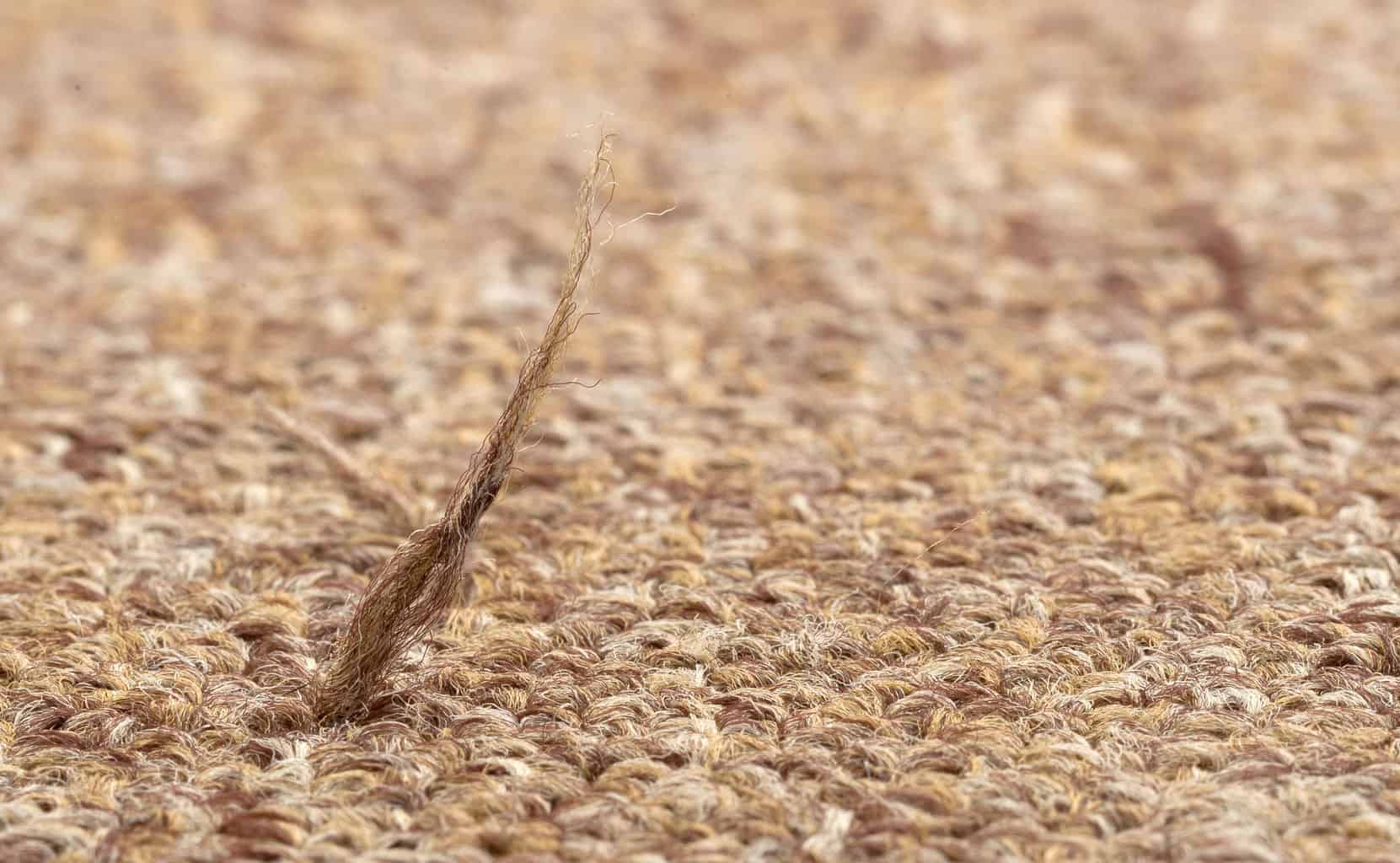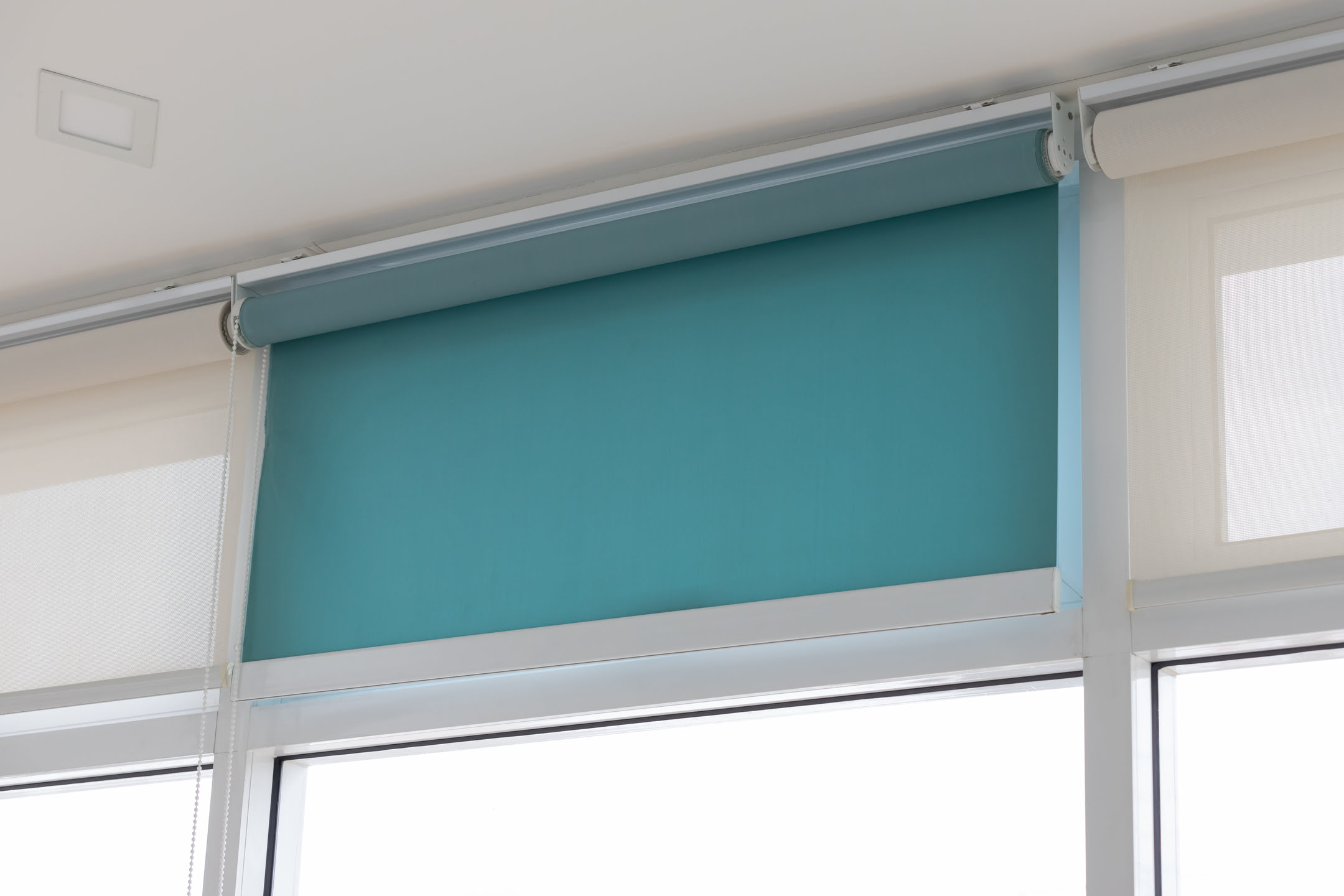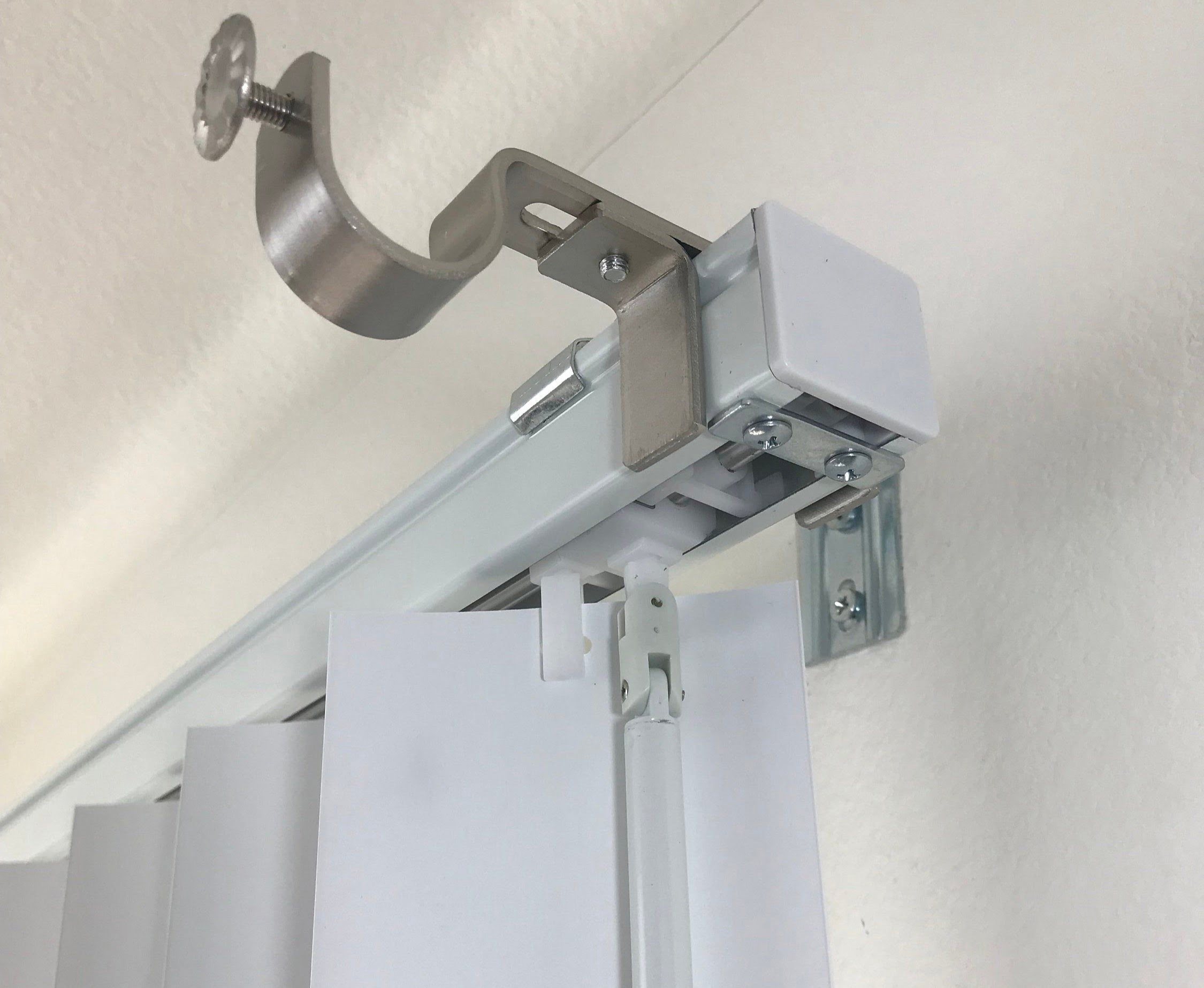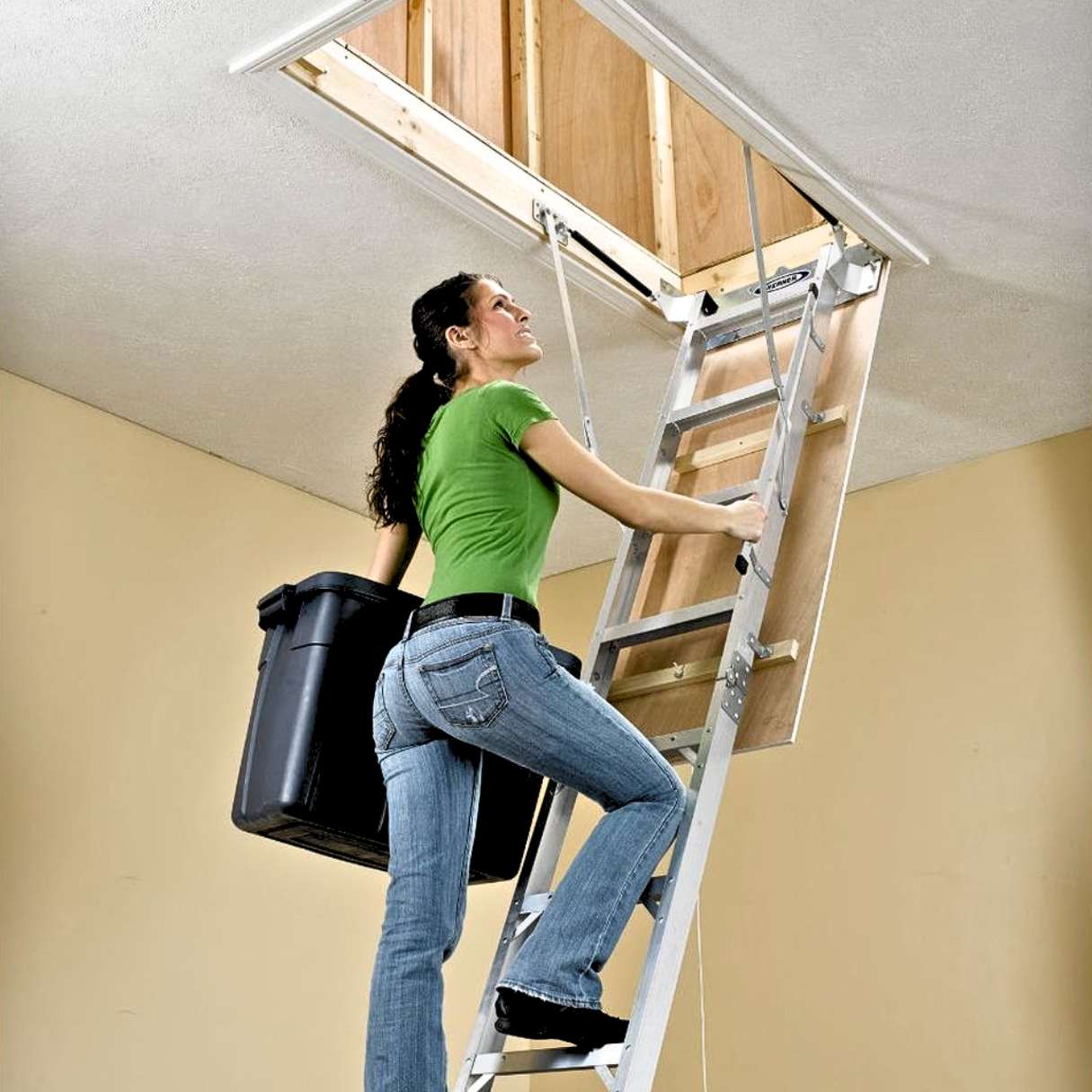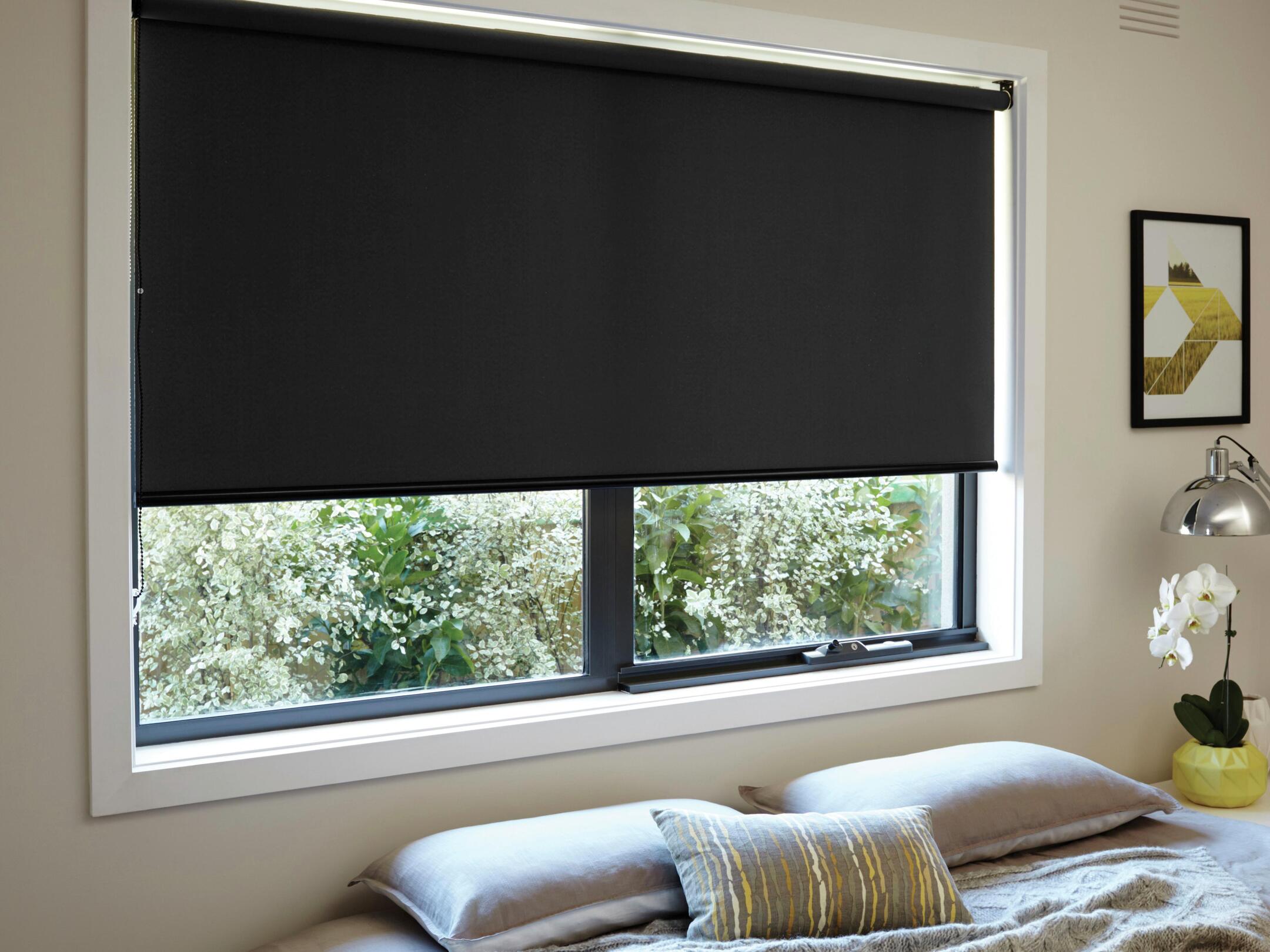

Articles
How Do You Fix Pull Down Blinds
Modified: February 17, 2024
Looking for articles on how to fix pull down blinds? Discover expert tips and step-by-step guides to easily repair your blinds and bring them back to perfect functioning.
(Many of the links in this article redirect to a specific reviewed product. Your purchase of these products through affiliate links helps to generate commission for Storables.com, at no extra cost. Learn more)
Introduction:
Pull down blinds are a popular window treatment choice for many homeowners. They provide privacy, block out sunlight, and can enhance the overall aesthetic of a room. However, like any mechanical device, pull down blinds can sometimes encounter issues that require fixing.
In this article, we will discuss common problems that may arise with pull down blinds and provide step-by-step instructions on how to fix them. Whether your blinds are stuck, have a broken cord, or need adjusting, we’ve got you covered.
Understanding the inner workings of pull down blinds is crucial to tackling any issues that may arise. These window coverings consist of a roller mechanism at the top, with a fabric or vinyl shade attached. The shade is controlled by a cord system that allows you to pull it up or down to the desired position.
Now, let’s dive into the common problems you may encounter with your pull down blinds and how to fix them.
Key Takeaways:
- Regular cleaning and maintenance of pull down blinds are essential for their longevity and optimal performance. By following the step-by-step instructions provided, homeowners can effectively address common issues and ensure smooth, hassle-free operation.
- Understanding the inner workings of pull down blinds and conducting a thorough inspection are crucial for identifying and resolving specific problems. With the right tools and materials, homeowners can confidently tackle issues such as jammed cords, broken cords, uneven rolling, and more.
Understanding Pull Down Blinds:
Pull down blinds, also known as roller blinds, are a versatile and practical window treatment option. They are designed to provide privacy, block out sunlight, and add an aesthetic touch to any room. Understanding how pull down blinds work can help you better maintain and fix them when needed.
The main components of pull down blinds include the roller mechanism, the fabric or vinyl shade, and the cord system. The roller mechanism is located at the top of the blinds and houses a spring-loaded mechanism that allows the shade to roll up and down smoothly. The fabric or vinyl shade is attached to the roller and is available in various materials and colors to suit different preferences and interior styles.
The cord system is what enables you to control the movement of the blinds. The cords are attached to the bottom of the shade and run through a series of pulleys or guides. When you pull the cords, the shade either rolls up or rolls down, allowing you to adjust the amount of light and privacy in the room.
Most pull down blinds also have additional features such as a locking mechanism or a control stick that allows for precise positioning. These features ensure that the blinds stay in place once adjusted and prevent them from rolling up unintentionally.
Pull down blinds are available in various sizes to fit different window dimensions. They can be mounted inside the window frame or on the wall above the window. Installation is relatively straightforward and can usually be done by following the manufacturer’s instructions or hiring a professional.
Overall, pull down blinds are a practical and attractive window treatment option that offers control over light and privacy. Understanding how they function will assist you in troubleshooting any issues that may arise and ensure that your blinds continue to serve their purpose effectively.
Common Issues with Pull Down Blinds:
While pull down blinds are generally reliable and durable, they can experience some common issues over time. These issues can affect their functionality and prevent them from operating smoothly. Here are some of the most common problems you may encounter with pull down blinds:
- Blinds not rolling up or down smoothly: This is a common issue that can occur due to a variety of reasons. It could be caused by a buildup of dirt or debris on the roller mechanism, a misaligned shade, or a worn-out spring. This issue can be resolved by cleaning the roller mechanism, adjusting the shade, or replacing the worn-out components.
- Jammed or tangled cords: If the cords of your pull down blinds become jammed or tangled, it can prevent the blinds from functioning properly. This can happen when the cords get twisted or caught on something. To fix this issue, carefully untangle the cords and ensure they are running smoothly through the pulleys or guides.
- Broken or frayed cords: The cords of pull down blinds are subjected to constant use and may become damaged or frayed over time. This can lead to difficulties in raising or lowering the blinds. To fix this issue, you will need to replace the broken or frayed cords with new ones. This can be done by removing the old cords and threading the new ones through the pulleys or guides.
- Uneven rolling: Sometimes, one side of the blind may roll up or down faster than the other, resulting in an uneven appearance. This can be caused by a misaligned shade or an uneven tension in the cords. Adjusting the tension and aligning the shade can help resolve this issue.
- Stuck blinds: Pull down blinds may become stuck in a certain position, refusing to roll up or down. This can be due to a variety of reasons, such as a jammed roller mechanism or a damaged spring. Carefully inspect the blinds and identify the cause of the issue in order to apply the appropriate fix.
These common issues can often be addressed with some simple troubleshooting and basic repairs. In the following sections, we will discuss the tools and materials you will need to fix these problems and provide step-by-step instructions on how to resolve them.
Tools and Materials Needed:
Before you begin fixing any issues with your pull down blinds, it’s important to gather the necessary tools and materials. Having the right equipment can make the repair process smoother and more efficient. Here’s a list of the tools and materials you may need:
Tools:
- Screwdriver: You may need a screwdriver to remove any screws or fasteners that hold the blinds in place.
- Pliers: Pliers can be useful for gripping and maneuvering small parts, such as cords or springs.
- Scissors: A pair of scissors will be handy for cutting and trimming cords or fabric, if needed.
- Needle and Thread: If you need to mend or sew any fabric on the blinds, a needle and thread will be necessary.
- Cord Tensioner Tool: This tool is specifically designed to adjust the tension of the cords in pull down blinds.
Read more: How To Pull Blinds Down
Materials:
- New Cord: If you need to replace a broken or frayed cord, make sure to have a new cord that matches the existing one in length and thickness.
- Cord Lock: If the cord lock mechanism is broken or malfunctioning, you may need to purchase a replacement cord lock.
- Replacement Spring: If your blinds are not rolling up or down smoothly due to a worn-out spring, you might need to obtain a new spring.
- Cleaning Solution: If you notice any dirt or debris on the roller mechanism or the shade, a mild cleaning solution or detergent can help you clean them.
It’s essential to ensure that the materials you choose are compatible with your specific pull down blinds. Refer to the manufacturer’s instructions or consult a professional if you’re unsure about the right tools and materials to use.
Once you have collected the necessary tools and materials, you’ll be ready to tackle the common issues with your pull down blinds. In the following sections, we will guide you through the step-by-step process of fixing various problems that may arise.
Step 1: Inspect the Blinds:
Before you start fixing any specific issues with your pull down blinds, it’s important to conduct a thorough inspection. This will help you identify the exact problem and determine the necessary steps to fix it. Follow these steps to inspect your blinds:
- Start by fully extending the blinds to their lowest position. This will provide a clear view of the entire mechanism and shade.
- Take a close look at the roller mechanism at the top of the blinds. Check for any signs of dirt, debris, or damage. A buildup of dirt can cause the blinds to operate less smoothly.
- Inspect the cords and pulleys or guides. Look for any signs of fraying, damage, or tangling. Make sure the cords are properly aligned and running smoothly through the pulleys or guides.
- Examine the shade for any tears, discoloration, or misalignment. Check if the fabric or vinyl is in good condition and free from any damage that may affect the operation of the blinds.
- Test the movement of the blinds by gently pulling and releasing the cords. Observe if they roll up and down smoothly or if there is any resistance or uneven rolling.
While inspecting the blinds, pay attention to any unusual sounds or resistance encountered during the movement. This information can help you pinpoint the potential cause of the problem.
If you notice any specific issues during the inspection, such as a jammed roller mechanism, tangled cords, or a broken component, make a note of them. This will help you proceed with the appropriate steps in the subsequent sections.
Remember, a thorough inspection will ensure that you understand the underlying problem and allow you to approach the repair process efficiently. Once you’ve completed the inspection, it’s time to move on to the next step: identifying the problem and determining the appropriate course of action.
Step 2: Identify the Problem:
After conducting a thorough inspection of your pull down blinds, the next step is to identify the specific problem that is causing the issues you’ve encountered. By accurately identifying the problem, you can determine the most appropriate solution. Follow these steps to identify the problem with your pull down blinds:
- Review the notes you made during the inspection. Pay close attention to any visible signs of damage, misalignment, or irregularities.
- Refer to the common issues discussed earlier in this article. Compare your observations with the symptoms of each problem to narrow down the potential cause.
- If you encountered issues with smooth rolling, tangled cords, or uneven movement, it could indicate a problem with the roller mechanism, cords, or spring.
- If the blinds are stuck in a particular position or refusing to roll up or down, there may be an obstruction, a damaged component, or an issue with the cord locking mechanism.
- If you notice tears or damage to the fabric or vinyl, it may require patching or replacing.
- Consider any additional factors that may be contributing to the problem, such as excessive dirt or dust, improper maintenance, or exposure to extreme temperatures or humidity.
Taking the time to carefully identify the problem will ensure that you approach the repair process with a clear understanding of what needs to be addressed. It will help you select the appropriate steps and tools to fix the issue effectively.
Once you have identified the problem, proceed to the corresponding sections in this article that provide detailed instructions on how to fix common pull down blind issues. Remember to follow the steps carefully and make any necessary adjustments or repairs in a safe and controlled manner.
Now that you have identified the problem, you’re ready to move on to the specific troubleshooting and repair steps outlined in the subsequent sections.
Step 3: Fixing a Jammed Cord:
If you’re experiencing a jammed cord with your pull down blinds, it can prevent the blinds from operating smoothly. A jammed cord can occur when the cords get twisted, caught on something, or if there is a buildup of debris. Follow these steps to fix a jammed cord:
- Start by fully extending the blinds to their lowest position. This will provide better access to the cord mechanism.
- Inspect the cords and pulleys or guides. Look for any tangles or obstructions. Gently untangle any twisted cords or remove any debris that may be blocking the smooth movement of the cord.
- If the cord is still jammed, carefully release any tension from the cord by pulling it gently until the jam is released. Be cautious not to pull too hard, as this may cause further damage to the blinds.
- If the above steps don’t resolve the issue, you may need to detach the blinds from the window or wall for better access to the cord mechanism. Refer to the manufacturer’s instructions or seek professional advice if you’re not confident in doing this step yourself.
- Once you have access to the cord mechanism, inspect it for any visible damage or misalignment. Adjust or realign the mechanism if necessary.
- If the cord is severely damaged or cannot be untangled, it may need to be replaced. Refer to the steps outlined in the next section for instructions on replacing a broken cord.
- Test the movement of the cord by gently pulling and releasing it. Ensure that it moves smoothly through the pulleys or guides without any obstructions or tangles.
- Once you have resolved the jammed cord issue, reattach the blinds to the window or wall if they were detached in step 4.
If you continue to experience a jammed cord after attempting these steps, it may be necessary to consult a professional or contact the blinds’ manufacturer for further assistance.
Remember to exercise caution when working with the cord mechanism to avoid any accidents or damage to the blinds. Take your time and be patient during the process to ensure a successful fix.
Now that you have successfully fixed the jammed cord issue, you can move on to the next troubleshooting step or address any other issues you have identified during the inspection phase.
When fixing pull down blinds, start by checking the cord for any tangles or knots. If the cord is damaged, it may need to be replaced. You can also try lubricating the mechanism with silicone spray to help it operate smoothly.
Read more: How To Adjust Pull-Down Blinds
Step 4: Replacing a Broken Cord:
A broken cord in your pull down blinds can hinder their functionality and prevent you from adjusting the blinds as desired. If you have identified a broken cord during the inspection, follow these steps to replace it:
- Start by fully extending the blinds to their lowest position for easier access to the cord mechanism.
- Detach the blinds from the window or wall, if necessary, to provide better access to the cord mechanism. Refer to the manufacturer’s instructions or seek professional advice if needed.
- Remove any covers or panels that may be blocking your access to the cord mechanism. This will vary depending on the design of your blinds. Use a screwdriver or any other appropriate tools if required.
- Locate the broken cord and identify its attachment points on the shade and the roller mechanism. Take note of how the cord is threaded through each point before removing it.
- Detach the broken cord by detaching any hooks, clips, or knots that are securing it in place. Carefully remove the cord from the pulleys or guides, taking note of how it is threaded through each one.
- Measure the length of the broken cord to ensure the replacement cord is the correct size. Cut a new cord to match the length of the old one, allowing for a few extra inches for attaching and accommodating any necessary adjustments.
- Thread the new cord through the same path as the old cord, starting from the bottom pulley or guide, through the shade, and up to the top roller mechanism.
- Secure the new cord in place by attaching it to the appropriate hooks, clips, or knots on the shade and the roller mechanism. Ensure that the cord is properly tensioned and aligned.
- Reattach any covers or panels that were removed earlier and make sure they are securely fastened.
- If the blinds were detached in step 2, reattach them to the window or wall according to the manufacturer’s instructions.
- Test the movement of the new cord by gently pulling and releasing it. Ensure that it rolls up and down smoothly and that the blinds adjust to the desired position.
If you are unsure about any step or lack the necessary tools or skills, it’s always best to consult a professional to replace the broken cord for you.
Once the broken cord has been replaced, you can move on to adjusting the tension of the cords or addressing any other issues you have identified during the inspection. With your newly replaced cord, your pull down blinds should be back in working order, allowing you to enjoy easy and smooth adjustments.
Step 5: Adjusting Tension in Pull Down Blinds:
Proper tension in the cords of pull down blinds is essential for smooth operation and preventing issues such as uneven rolling or difficulties in raising and lowering the blinds. If you find that the tension in your blinds needs adjustment, follow these steps:
- Start by fully extending the blinds to their lowest position.
- Inspect the cords and pulleys or guides to ensure they are properly aligned and running smoothly. Remove any obstructions or tangles that may affect the movement of the cords.
- Identify the cord tensioner mechanism. This is usually located near the bottom of the blinds and may be a small plastic or metal component.
- Using a cord tensioner tool or a pair of pliers, tighten or loosen the tension on the cords by adjusting the tensioner mechanism.
- If the blinds have a locking mechanism, test the tension by raising and lowering the blinds. Ensure that the cords roll up and down smoothly and that the blinds stay in the desired position without slipping.
- Continue adjusting the tension as needed until you achieve the desired level of tension for smooth operation and proper positioning of the blinds.
- Once you are satisfied with the tension adjustment, secure the tensioner mechanism in place to ensure it remains in the desired position.
- Test the movement of the blinds by raising and lowering them multiple times to ensure they operate smoothly and stay in the desired position.
It’s important to exercise caution when adjusting the tension in the cords to avoid over-tightening or damaging the mechanism. Make small adjustments and test the blinds after each adjustment to ensure you achieve the desired tension without compromising the functionality of the blinds.
If you encounter any difficulties or the tension adjustment does not resolve the issues, it’s advisable to consult a professional to ensure proper adjustment and to avoid potential damage to the blinds.
Once you have successfully adjusted the tension in your pull down blinds, you can move on to the final step of cleaning and maintaining them to keep them in optimal condition.
Step 6: Cleaning and Maintaining Pull Down Blinds:
To ensure the longevity and optimal performance of your pull down blinds, regular cleaning and maintenance are essential. Follow these steps to effectively clean and maintain your blinds:
- Start by fully extending the blinds to their lowest position.
- Use a feather duster, vacuum cleaner with a soft brush attachment, or a microfiber cloth to remove any dust, dirt, or debris from the surface of the blinds. Gently wipe or brush along the length of the blinds, paying attention to the folds of the fabric or vinyl.
- For stains or spots on the blinds, prepare a mild cleaning solution by mixing a small amount of gentle detergent with warm water. Dampen a clean cloth in the solution and gently blot the stained areas, being careful not to saturate the fabric or vinyl.
- For tougher stains, consult the manufacturer’s instructions or seek professional advice to avoid damaging the material of the blinds.
- Once you have cleaned the blinds, allow them to air dry completely before operating them.
- Inspect the roller mechanism at the top of the blinds for any signs of dirt, debris, or damage. Use a soft brush or a damp cloth to clean the mechanism, ensuring that it moves freely and smoothly.
- If you notice any frayed or damaged cords, replace them using the instructions outlined in a previous step.
- Regularly check the alignment of the blinds and adjust if necessary to ensure they hang evenly and roll up and down smoothly.
- Periodically lubricate the roller mechanism and other moving parts of the blinds, if required, using a silicone-based lubricant. Refer to the manufacturer’s instructions for specific lubrication recommendations.
- Consider installing blinds with a UV-protective coating for long-lasting color and fabric protection, especially if your blinds are exposed to direct sunlight.
By regularly cleaning and maintaining your pull down blinds, you can not only extend their lifespan but also keep them looking their best. A well-maintained blind will operate smoothly and effectively, enhancing the aesthetics and functionality of your space.
Remember to consult the manufacturer’s instructions for any specific cleaning and maintenance recommendations tailored to your blinds. If you are uncertain about any maintenance steps or encounter stubborn issues, it’s advisable to seek professional assistance to ensure proper care and prevent any damage to the blinds.
With the completion of this final step, you have successfully cleaned, maintained, and resolved any issues with your pull down blinds. Enjoy the benefits of well-functioning and visually appealing blinds in your home!
Now, it’s time to wrap up this comprehensive guide on fixing pull down blinds!
Conclusion:
Fixing common issues with pull down blinds is a manageable task that can greatly enhance the functionality and appearance of your window treatments. By following the step-by-step instructions provided in this guide, you can successfully tackle various problems, such as jammed cords, broken cords, uneven rolling, and more.
Understanding how pull down blinds work and conducting a thorough inspection are crucial initial steps in the troubleshooting process. By identifying the specific problem, you can implement the appropriate solution more effectively. Whether it’s untangling a jammed cord, replacing a broken cord, adjusting tension, or cleaning and maintaining the blinds, each step plays a vital role in restoring the optimal performance and appearance of your pull down blinds.
Remember to gather the necessary tools and materials before starting any repairs, and always prioritize safety by exercising caution and seeking professional assistance when needed.
With regular cleaning and maintenance, your pull down blinds will continue to function smoothly and provide privacy and light control for years to come. By properly caring for your blinds, you can avoid future issues and prolong the lifespan of this valuable window treatment.
We hope this guide has empowered you with the knowledge and confidence to address common problems with pull down blinds. With these skills at your disposal, you can maintain and fix your blinds, saving time, money, and frustration in the process.
Now, go ahead and apply these steps to fix and maintain your pull down blinds. Enjoy the benefits of well-functioning and aesthetically pleasing window treatments that enhance your living space.
Frequently Asked Questions about How Do You Fix Pull Down Blinds
Was this page helpful?
At Storables.com, we guarantee accurate and reliable information. Our content, validated by Expert Board Contributors, is crafted following stringent Editorial Policies. We're committed to providing you with well-researched, expert-backed insights for all your informational needs.
